Win a trip to Los Angeles!
This feature is brought to you in association with Masters of CG, a new competition that offers the chance to work with one of 2000AD's most iconic characters and win an all expenses paid trip to the SIGGRAPH conference. Find out more at the end of this article...
Visual effects artists becoming full-blown movie directors is a trend that's been growing for some time now.
It was back in 2006 that Variety first pointed to the number of VFX supervisors taking charge of 'tentpole' movies such as Eragon (Stefen Fangmeier) and Pirates of the Caribbean: Dead Man's Chest (Gore Verbinski). And as CG has become more important to the industry - particularly at the blockbuster end of the spectrum - so the trend has intensified.
Here we look at five big names currently bringing their visual effects smarts to the director's chair.
01. Gareth Edwards
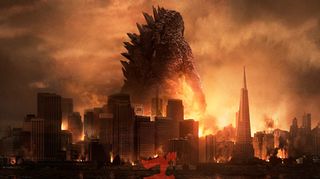
One of the most talked-about directors of the moment, Gareth Edwards cut his filmmaking teeth in the world of VFX, creating effects for shows such as 2007-8's Heroes and Villains, a BBC docudrama series about some of the greatest warriors of history.
Then in 2008 he entered and won the Sci-Fi-London contest, which challenged filmmakers to create a movie from start-to-finish in just two days. Inspired by his sucess, in 2010 he devised, storyboarded and directed his first feature, Monsters.
Depsite being a low-budget creation (the crew ran to just five people, and Edwards personally created the special effects using off-the-shelf equipment) it was a huge commercial success and brought him worldwide recognition.
Get the Creative Bloq Newsletter
Daily design news, reviews, how-tos and more, as picked by the editors.
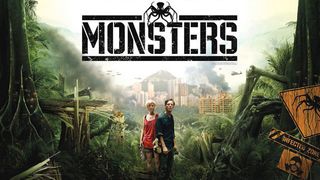
As a result, in 2011 Edwards landed his first major Hollywood gig, as the director of the 2014 Godzilla reboot from Warner Bros and Legendary Pictures. Across the next few years Edwards is planning to direct two more Godzilla films as well as working on the first Star Wars stand-alone film with writer Gary Whitta, due to be released in 2016.
Edwards is explicit about the fact that he's always wanted to be a director, and that for him VFX was very much a means to an end. "I've wanted to do this since I was four," he says in this interview.
"Doing the film school thing and going into computer graphics, for a long time I thought I'd just wasted my career and that it wasn't going to happen. But the trick is never to give up. I think the secret of success is not how little you get knocked down but how often you get up."
02. Robert Stromberg
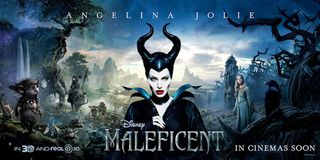
Robert Stromberg grew up in Carlsbad, California, and learned about the filmmaking process early on - both from his father, the stop-motion animator William R Stromberg, and retired Disney artist Bruce McIntyr, who became an art teacher at his school.
Stromberg went on to have a successful career as a visual effects artist and production designer on films including Avatar and Alice in Wonderland - both of which earned him Academy Award wins for Best Art Direction - as well as Oz the Great and Powerful. And now he's turned his hand to directing, with his debut Maleficent - a reimagining of the Disney villain in Sleeping Beauty - in cinemas now.
Stromberg had always secretly wanted to direct, he now admits. "I got sidetracked by this pesky, you know, art direction stuff," he says in this interview. But he recognises the contribution that his VFX and art direction background has made to his directing abilities. "It was part of the journey," he says. "I'm glad that I did all that stuff because it prepared me not only being around these big movies but also meeting a lot of great directors."
03. Neill Blomkamp
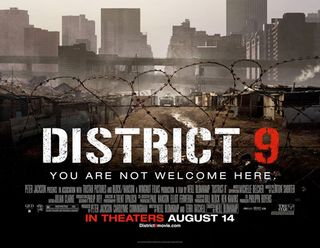
Neill Blomkamp was born in Johannesburg, South Africa, and started developing a passion for 3D animation and design from the age of 16. At 18 he enrolled in Vancouver Film School and went on to work as a visual effects artist at both The Embassy Visual Effects and Rainmaker Digital Effects.
Blomkamp moved into directing with a trilogy of live-action short films in 2007 to promote the release of Halo 3. But it was a return to South Africa to direct sci-fi movie District 9 that catapulted him to worldwide attention.
Produced by Peter Jackson, this epic adaptation of Blomkamp's earlier short film 'Alive in Joburg' was nominated for the 2009 Academy Award for Best Picture, along with nominations for Best Visual Effects, Editing, and Adapted Screenplay. Blomkamp went on to direct 2013's Elysium and is currently working on a new comedy sci-fi film Chappie, due for release in 2015.
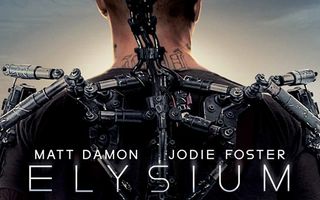
In this interview to promote Elysium, he talks of the advantages and disadvantages of having a director with a VFX background. "There are many negatives to a director having that history - they don't know story, they don't know how to work with actors - some of which I'm guilty, but the positives are also many."
A director with VFX experience can save money by making the right decisions in prep, he adds, as they have the confidence to say things like: "No, that shouldn't be VFX, it's a waste of money, it should be old school practical effects."
04. Andrew Adamson
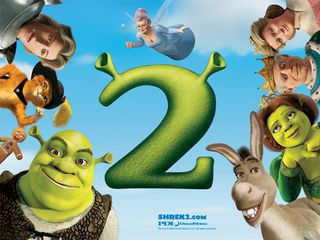
New Zealander Andrew Adamson served as visual effects supervisor on 1990s movies including Batman Forever and Batman & Robin - both finalists for an Academy Award nomination for Best Visual Effects. But bigger things were to come for the artist. In 2001 he got the chance to co-direct Shrek, the film that finally established DreamWorks Animation as a serious competitor to Pixar.
With a moderate budget of US$60 million, the fairytale parody became a worldwide success, taking in nearly $500 million in the box office, and Adamson went on to write and direct its sequel, which was another big hit.
He then consolidated his reputation as a leading director by co-producing, co-writing and directing The Chronicles of Narnia: The Lion, the Witch and the Wardrobe, the third highest grossing film of 2005.
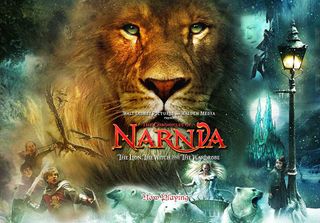
Adamson also directed the follow-up, Prince Caspian, and has more recently moved into producer roles, including the third Narnia movie, The Voyage of the Dawn Treader and the forthcoming Truckers (2015) and Trolls (2016).
Directing an animated movie is "like directing in slow motion", he explains in this interview. "In live-action, when you walk on the set - the camera is there, the lights are there, the actors are there, the environment is there, they're all in the same room, and you roll and you get the scene and you're done. In animation, that same process can be stretched out easily over a year. [...] Effectively you [go] through the same steps, it was just stretched out over a long period of time."
05. The Brothers Strause
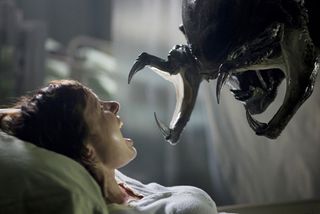
Brothers Greg and Colin Strause, aka the Brothers Strause, have been creating visual effects since their early teens. In the '90s they took charge of VFX for The X-Files movie, The Nutty Professor, Volcano and the iceberg sequence of Titanic.
Most recently they've performed special effects work on 300, X-Men: The Last Stand, Fantastic Four, Terminator 3: Rise of the Machines, and The Day After Tomorrow.
In 2007, the siblings made their feature directing debut with sci-fi horror Aliens vs. Predator: Requiem. In 2010, they went on to direct and produce another science fiction epic, Skyline, and they're currently executive-producing Abattoir (currently in pre-production) and producing Chimera (currently in post-production).
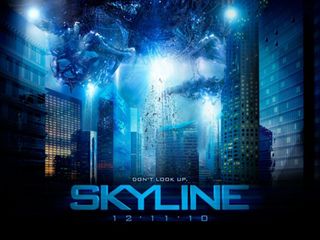
Skyline is a great example of how a VFX background can help a producer keep costs low. "One of the weird things we see in every movie now is that studios spend hundreds of thousands of dollars on some of the most amazing previsualization, and then no director follows it," they explain in this interview. "That's the whole point of previs - you do it so the shoot goes fast. [On Skyline] we did a lot of the previs and it was exactly what we shot." As a result, the total budget for the movie came in at just $20 million.
If there's one thing that talks loudly in the movie industry, it's money. And if this new generation of effects artists turned directors and producers continues to boost investors' bottom line, could visual effects experts become the new Hollywood royalty?
Win a trip to Los Angeles!
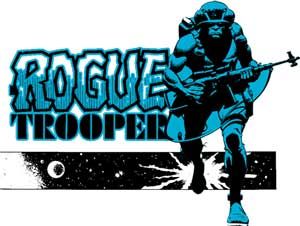
Masters of CG is a competition for EU residents that offers the one-in-a-lifetime chance to work with one of 2000AD's most iconic characters: Rogue Trooper.
We invite you to form a team (of up to four participants) and tackle as many of our four categories as you wish - Title Sequence, Main Shots, Film Poster or Idents. For full details of how to enter and to get your Competition Information Pack, head to the Masters of CG website now.
Enter the competition today!

Thank you for reading 5 articles this month* Join now for unlimited access
Enjoy your first month for just £1 / $1 / €1
*Read 5 free articles per month without a subscription

Join now for unlimited access
Try first month for just £1 / $1 / €1
Tom May is an award-winning journalist and editor specialising in design, photography and technology. Author of the Amazon #1 bestseller Great TED Talks: Creativity, published by Pavilion Books, Tom was previously editor of Professional Photography magazine, associate editor at Creative Bloq, and deputy editor at net magazine. Today, he is a regular contributor to Creative Bloq and its sister sites Digital Camera World, T3.com and Tech Radar. He also writes for Creative Boom and works on content marketing projects.




